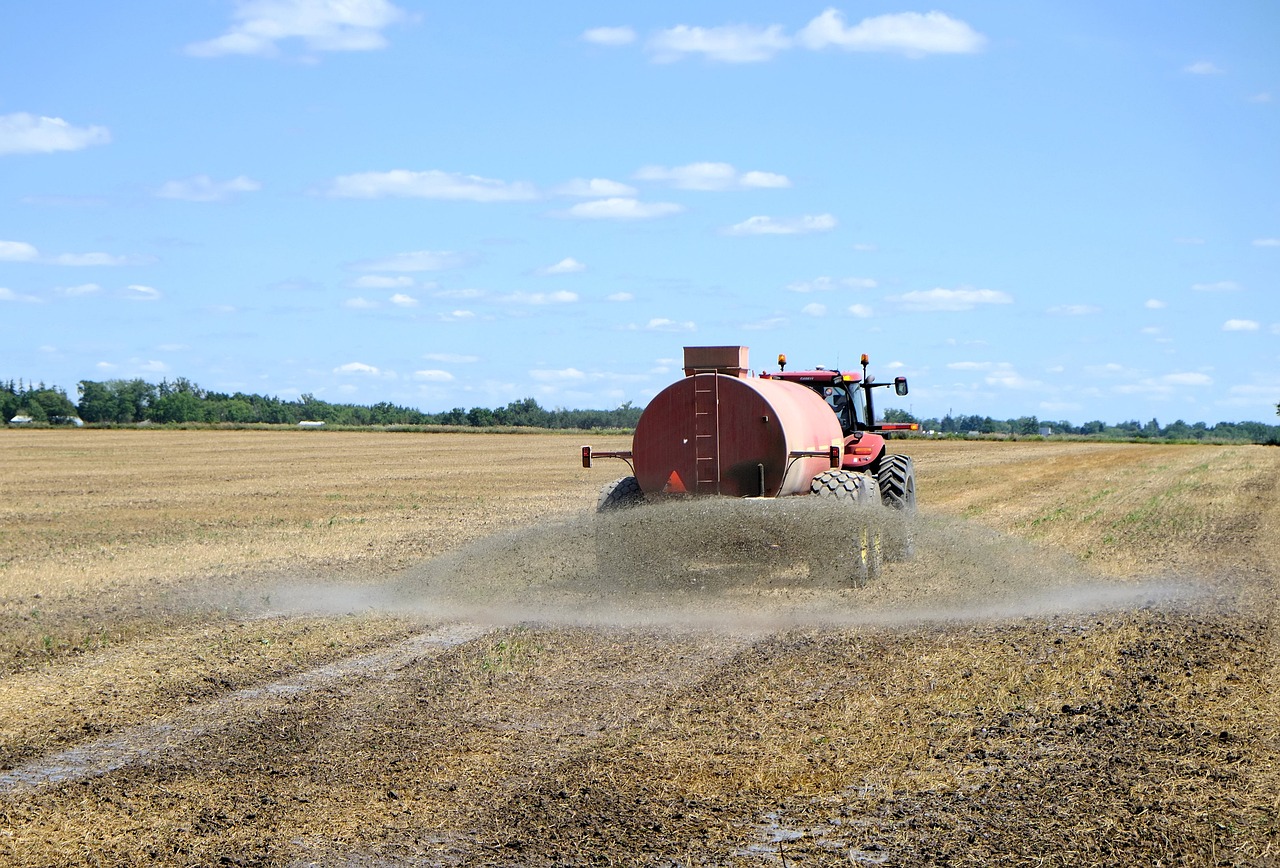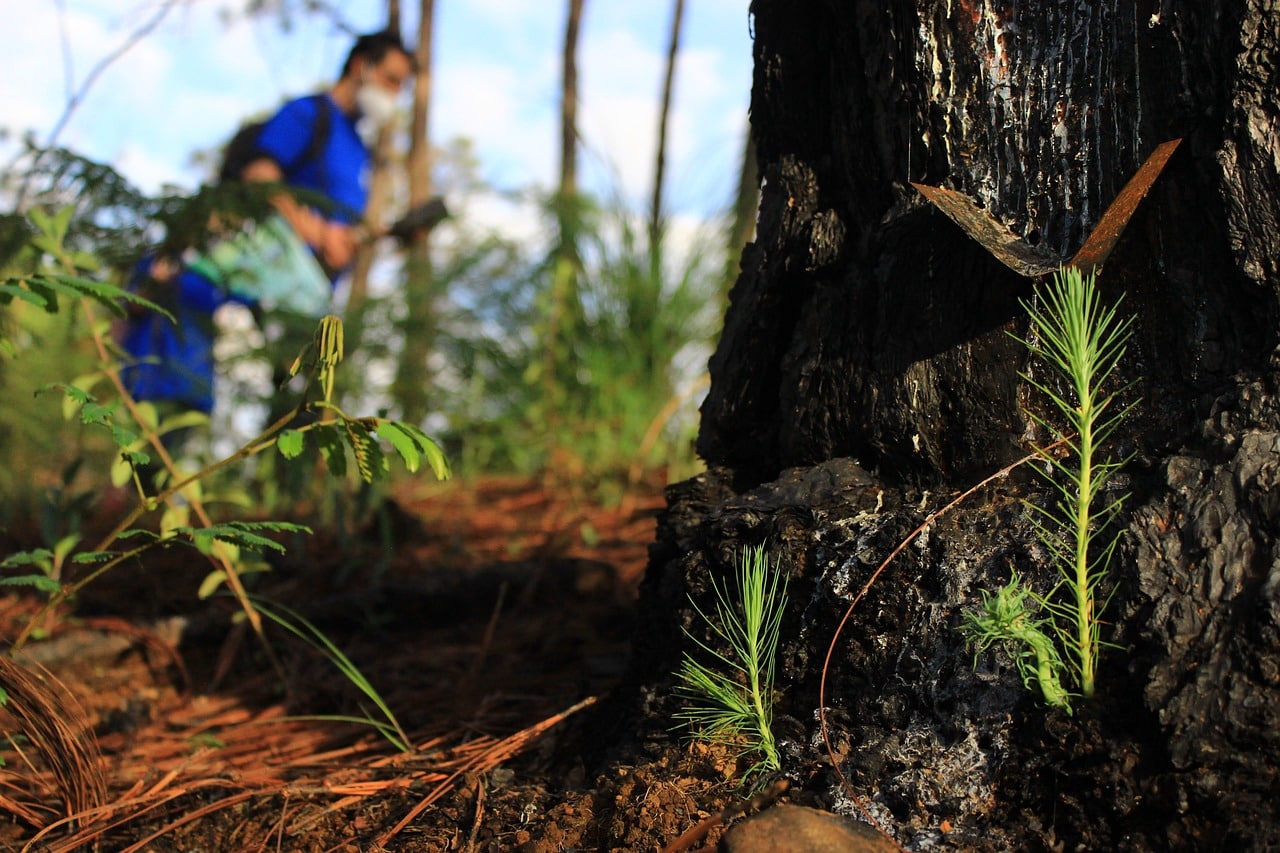
Certain fertilization products used in agriculture alter the carbon cycle.
The carbon cycle is the cyclic process that this chemical element develops as it circulates through the atmosphere, the hydrosphere , the geosphere and the biosphere . This series of events is indispensable for life to exist on planet Earth.
It should be noted that the carbon cycle is a biogeochemical cycle , as are the oxygen cycle , nitrogen cycle , phosphorus cycle , sulfur cycle and water cycle . The biogeochemical qualification refers to the interaction established between geochemical compounds and living beings.
Characteristics of the carbon cycle
The carbon cycle consists of the exchanges of substances that contain this chemical element with symbol C , which are carried out in different ways and in different places. It is important to indicate that carbon is present in all organic compounds and even in many inorganic compounds.
Thanks to this cycle , carbon is recycled and can be reused. It must be taken into account that the levels of this element are not modified beyond the transformations, which means that there is a carbon balance on a global scale.
This balance is a reflection of the equilibrium that is reached as carbon enters or leaves a reservoir or loop. A carbon pool can function as a sink or a source depending on whether it absorbs or emits carbon.
Operation of a sink
A carbon sink is a reservoir where the absorption of carbon and carbon dioxide (CO2) from the air takes place. Forests and oceans are the most important sinks.
In these sinks, the process known as carbon sequestration takes place, which involves the extraction of carbon from the atmosphere for storage in a deposit. The most common mechanism to achieve this sequestration is photosynthesis .
If we focus on a forest, it absorbs carbon dioxide from the photosynthesis of plants and trees, storing a percentage of the carbon (in wood, for example) and returning oxygen. In the case of the oceans, carbon is assimilated by corals, plankton and fish.

Through appropriate environmental policy and climate legislation, it is possible to reduce human influence on the carbon cycle.
Incidence of human beings in the carbon cycle
The impact of human beings on the carbon cycle has increased in recent centuries, altering its natural development. It is relevant to mention that carbon dioxide is one of the greenhouse gases that influence global warming and, therefore, climate change .
Starting in the mid- 18th century , with the emergence of the Industrial Revolution , humans caused an increase in the concentration of CO2 in the atmosphere as they increased emissions due to the massive combustion of fossil fuels. Simultaneously, the growth of deforestation and greater soil degradation threaten natural sinks.
Faced with this reality, the international community agreed on measures through instruments such as the Kyoto Protocol and the Paris Agreement to promote a reduction in greenhouse gas emissions such as CO2 (privileging the use of renewable energies such as solar energy and wind energy ) and protect the sinks that help reduce the concentration of said gas in the atmosphere.
With the intention of improving this situation and preserving ecosystems, scientists from various countries are researching techniques for carbon storage by artificial methods (that is, outside the carbon cycle). This carbon fixation requires first its capture so that it can then be stored.
Carbon capture , in this framework, can occur using amines or hydroxides. Carbon storage , in turn, is feasible to achieve through the injection of CO2 into underground geological formations.

Reforestation is necessary to promote the reestablishment of the natural carbon cycle.
Different time scales
It cannot be omitted to mention that the steps of the carbon cycle develop on different time scales . Among the short-term processes are the carbon transfer that takes place between predatory animals and their prey; breathing; and photosynthesis.
If we consider marine species that have skeletons and shells made of calcium carbonate, when they die, remains remain that do not undergo decomposition and end up on the ocean floor. That carbon that was stored in their bodies is transformed into sediments that, with the movements of the tectonic plates, reach subduction zones and end up becoming metamorphic rocks . All these changes take place over a very long period of time. The time in which the erosion of carbon-rich rocks occurs is also extended, to mention another phenomenon.
It must be considered that there is always a use of carbon that is not processed by decomposer organisms. That carbon, through sedimentation processes, goes to the different layers of the Earth's crust or, as we already indicated, to the bottom of the ocean. In this context it can even be deposited in hydrocarbon deposits or form fossils .
